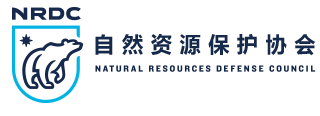中国电力报 中电新闻网记者 马建胜 徐瑶
 BarbaraFinamore 中美能效联盟主席,自然资源保护协会(NRDC)亚洲项目主任,哈佛大学法学博士,曾供职于美国司法部、内政部、联合国开发计划署和国际环境法中心,曾任环球中国环境专家协会会长和主席。她在环境法和能源政策方面有30年的工作经验,在中国大陆和台湾地区生活工作了近20年。
BarbaraFinamore 中美能效联盟主席,自然资源保护协会(NRDC)亚洲项目主任,哈佛大学法学博士,曾供职于美国司法部、内政部、联合国开发计划署和国际环境法中心,曾任环球中国环境专家协会会长和主席。她在环境法和能源政策方面有30年的工作经验,在中国大陆和台湾地区生活工作了近20年。
“中国的电力需求侧管理和碳交易潜力巨大”
中国电力报:您是中美能效联盟主席,请问中美能效联盟在中国做了哪些提高能效和节能方面的项目?
BarbaraFinamore:中美能效联盟是通过把节能作为最清洁、最廉价的能源资源来与全球气候变化做斗争的一个非赢利性组织。它的目的是从美国的私有企业、公共事业政策制定者和公共事业企业引进各种专业知识。加州以及美国其他一些州在节能领域已经走的非常远,并且也非常成功,因此10年来,我们邀请了很多合作者来中国,分享他们的经验。同时,我们也鼓励中国的专家们去美国进行交流。
大约10年前,我们在江苏省(作为加州的姐妹省)支持了中国首个大型能效激励机制项目,我们签订了合约,分享了加州的经验,并首次引进开展电厂的需求侧管理项目(DSM)。DSM也成为了中央政府制定该领域政策的蓝图。现在我们与国务院发展研究中心合作,帮助他们实施相关的政策项目,我们同时也与国家电网公司和南方电网公司等企业合作,对他们的专家进行培训,指导他们怎样执行这些政策。
然而转型的固有阻碍还是存在的。因为电网企业在推进DSM时,丢失了很多利益(收入和利润),电网公司在这个过程中遇到了很多利益冲突。我们正积极地配合电网公司探索如何将DSM获得的收入从售电量中分离出来。
燃煤电厂和其他一些工业企业不受约束地使用煤炭是造成中美大气污染和气候变化的主要原因。因此两个国家处理这些污染物时必须要考虑这个问题。在中国,除了燃煤电厂使用大量的煤炭以外,一些重工业如钢铁、水泥、煤化工同样在煤炭消费和污染方面占到了相当大的比重。
中国电力报:减排与雾霾的关系非常紧密,您对中国治理雾霾有什么建议?
BarbaraFinamore:中国政府于2013年9月发布了《大气污染防治行动计划》,首次提出了“制定国家煤炭消费总量中长期控制目标,实施目标责任管理”。而自然资源保护协会(NRDC)作为课题协调组单位,与包括政府智库、科研院所和行业协会等17家有影响力的机构合作,于2013年10月共同启动了“中国煤炭消费总量控制方案和政策研究”项目,为设定全国煤炭消费总量控制目标、实施路线图和行动计划提供政策建议和可操作措施,促使煤炭消费量在2020年前达到峰值,帮助中国实现资源节约、环境保护、气候变化与经济可持续发展的多重目标。我相信这正是习近平主席所说的能源革命的一个有力行动。
虽然目前有些省份已经根据他们的清洁计划出台了碳峰值的控制目标,但是煤炭的利用可能会从这些省份迁移到其他省份去,那么污染就可能会脱离原本碳峰值控制的初衷。
此外,中美应该加强在市场机制方面的合作,例如利用碳排放权交易项目来进一步鼓励清洁能源的投资。中国已经在五个城市和两个省份发起了碳交易试点项目。中国有意在第十三个五年规划里(2016~2020)成为建立全国性碳交易市场体系的先驱者。而同样在美国,“区域温室气体倡议”和“加州的排放限额与交易计划”都在有效地开展排放限额交易项目,并提供了非常宝贵的经验。
比如制定准确、全面的排放清单,包括通过使用连续的排放监测系统。这无论是对中国的碳交易还是碳税制度的发展都是相当有益的。同时设计排放交易系统,以使其达到最佳减排效果,特别是可以通过提高项目效率来激励可再生能源项目的投资。
“提高能效管理水平与使用先进设备同样重要”
中国电力报:您对中国调整能源结构,特别是增加清洁能源和可再生能源比重方面有什么建议?
BarbaraFinamore:首先,非常重要的一点就是能源整合。目前,中国能源整合最需要做的工作就是制定能源整合的规划。在加州和美国其他地区,最高层的能源政策制定者以及那些决定需要使用多少能源的企业决策层,会对节能增效项目的预期效果进行测算,根据测算数据制定出整合规划,达到“负瓦特”的目标。在其他很多国家,都会有一个部门专门做能源规划工作,而由另外一个部门专门做节能增效工作。为了真正地做到节约能源,整合规划必不可少。
其次,中国目前在可再生能源方面引领着全球浪潮,无论是风电还是光伏领域,我所知道的国家中,做得最棒的就是中国。但是这里的关键仍然还是能源整合,将风电、光伏还有一些其他可再生能源资源整合起来,这里面有很多事情需要超前考虑,考虑怎样才能做到,并找到前进的道路。我在这里想举电动车这个例子,中国已经规划出了如何发展电动汽车,我们看到了很多令人兴奋的想法以及已经启动的工作措施,他们与美国等国家共同合作,而电动汽车可以成为能源整合系统的一部分。
中国电力报:在未来很长一段时间里,煤炭仍会是人类使用的主要能源,对于优化煤炭利用以及提高燃烧效率,您能介绍一下美国或者其他国家有什么值得我们借鉴的经验吗?
BarbaraFinamore:实际上,中国在煤炭燃烧效率方面已经是世界的领跑者了,因为很多燃煤电厂都是新建的,采用了最新的技术。而在美国已经不再有新的燃煤电厂了,那些老电厂使用的还是陈旧设备,所以我觉得在这方面中国可以与其他国家分享成功的经验。
但是我认为,使用最新、最先进的设备虽然很关键,但节省煤炭方面仍有很大的潜力可挖,这就是我们所说的通过管理能力的提升来提高“经营效率”。
因为,中国已经在节能增效方面做了很多工作,很多激励项目都已经实施,设备也进行了更新换代,特别是那些各工业门类都会用到的通用设备,比如风扇、泵等。虽然继续投资更加高效的设备会很快获得回报,但是更先进的设备意味着需要更大量的资金投入,而且对设备的更新会浪费掉大量的能源和其他资源。
可见,如果投入大量的精力对设备效率进行检测并想办法来提高效率,需要花费大量人力、智力和财力去研究怎样改善设备。我们已经听过很多中国工厂描述这些改造的过程和经验。
那么,有没有更加节约资金的方法来节约能源的使用量呢,这就是我们在倡导的成本有效的方式。我们有一个综合性的节能管理系统是专门针对这方面的,也是国际上最棒的实践,叫做“能耗信息平台(SEM)”。此外,还有一个能源管理体系ISO50000,但这个目标标准非常的复杂,因此中国可以考虑先在小型工厂采用这种体系。当然,还有其他很多方法可以节省能源,中国需要去尝试,这样才能更深层次地节约能源。
“中国港口城市的船舶污染应该引起足够重视”
中国电力报:您认为中美两国在环境方面的合作应该朝着什么方向发展?
BarbaraFinamore:作为世界上两个最大的碳排放国,中国和美国不管是在国家层面还是具体到城市之间,都在积极地进行各种气候行动计划方面的合作。两个国家都意识到气候变化引起的负面影响正在不断出现,干旱、粮食危机、海平面上升等问题已经越来越突出。
气候变暖对中国已经非常脆弱的食品和水供应造成了更进一步的威胁,而海平面的上升会对海岸线上数百万的居民造成影响。
除了国际气候变化合作协议,两国之间仍然有很多事情可以合作。比如在更清洁的燃料,可持续发展社区,节能增效,可再生能源,清洁电厂,港口、区域大气污染控制,以及碳峰值和交易项目等方面。
此外,页岩气合作项目和核电发展保护措施的合作,以及对氢氟碳化物和黑炭的短期行动的合作,在现在和将来都是一个方向。
中国电力报:您最近主要关注的领域是什么?
BarbaraFinamore:我是NRDC亚洲项目主任,我也同时是降低船舶港口排污项目主任。与污染作斗争,中国首先要做的就是对所有主要排放源进行分析。
我们通过对中国港口城市的研究,例如香港,发现中国船舶排放的废气对空气的污染非常严重,但目前中国航运船舶的排放基本上是不受控制的,而且降低港口所使用的各种机械设备的排放还仅仅处于起步阶段。
这也是我们刚刚发布的《船舶港口空气污染防治白皮书》主要研究的领域。我们研究的主要内容包括港口和航运排放对环境和公共健康的影响,以及从国际海事组织和其他制定相关法律法规的国家获得的国际经验。白皮书可以无偿提供给中国政府和中国主要港口城市作为减少污染物排放的资料来使用。

